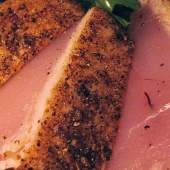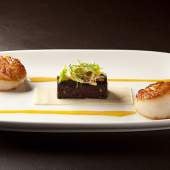Chocolate

“Any month whose name contains the letters A, E, or U is the proper time for chocolate.”
— Sandra Boynton
“All you need is love. But a little chocolate now and then doesn’t hurt.”
— Peanuts creator Charles Schulz
“What you see before you, my friend, is the result of a lifetime of chocolate.”
— Katharine Hepburn
Today, July 7, is International Chocolate Day, an occasion (all right…an excuse!) for lots of chocolate-fueled celebrations around the world! Dark, milk, bittersweet, combined with other entities such as nuts, toffee, caramel, fruits, nougats, peanut butter, mint; in baked goods, beverages, spreads, ice cream; fillings, coatings, infusions…so many options, too little time!
Chocolate is made from seeds, or beans, from the cacao tree found in what was once Mesoamerica (now Central America), and as a consumable, it may have been in existence for upward of 4,000 years. The possibilities presented by the cacao bean were first discovered by the ancient Aztecs, who believed that they were a gift from the god of wisdom, Quetzalcoatl (hence, the original name for chocolate, which was xocoatl). Its Latin name, Theobroma cacao, means “food of the gods.” Works for us!
Up until about 175 years ago, chocolate was consumed solely in liquid form, and it didn’t bear much resemblance to the sweet, creamy hot cocoa we enjoy today; it was an extremely bitter drink with rumored medicinal (and aphrodisiacal) powers. It was probably also fermented and served as an alcoholic beverage — a triple threat!
This may explain why, according to the Smithsonian, cacao beans were highly prized from the very start. “For several centuries in pre-modern Latin America, cacao beans were considered valuable enough to use as currency. One bean could be traded for a tamale, while 100 beans could purchase a good turkey hen, according to a 16th-century Aztec document.” This concept later spread to America: during the Revolutionary War, legend has it that some soldiers were actually paid in chocolate. And were not heard to complain.
It wasn’t until about that same time that some European innovator, having been introduced to the imported cacao bean by none other than Christopher Columbus (or Spanish explorer Hernando Cortez depending on which source you believe), got the bright idea to add sweetener and alkaline salt to chocolate to cut the bitterness. After that, chocolate became extremely popular in the mainstream, especially after the first solid chocolate bar came along in 1847, invented by someone named Joseph Fry. And of course it remains so today.
A vintage Fry's Milk Chocolate poster
A few fun facts as you contemplate your local candy counter:
- Chocolate helps you relax! The aroma stimulates your theta brain waves which control that function. Also, daily consumption of dark chocolate can cut down on your risk of heart disease by a third.
- Also in the medicinal column: chocolate can protect against tooth decay, and also makes a great cough remedy.
- As you have probably heard, there is caffeine in chocolate. The darker the variety, the more caffeine it contains. You might want to bear that in mind if you’re a big coffee drinker.
- If you want to get technical about it, white chocolate isn’t really chocolate at all, as it contains neither cocoa solids nor cocoa liquor. Don’t let that stop you, though.
- There is a direct connection between a country’s chocolate consumption per capita and the number of Nobel Laureates it produces.
- It takes about 400 cacao beans to create 100 pounds of chocolate, which coincidentally is the same amount that Americans collectively consume in this country each SECOND.
- M&Ms were conceived as a way for soldiers in combat to carry a form of chocolate that “melts in [their] mouth, not in [their] hand.”
- Chocolate is deadly for dogs and cats; for the same to be said of humans, one would have to consume about 22 pounds of it at once. (Unlikely, but someone has probably tried.)
- Scientists have determined that hot cocoa tastes best when served in orange or cream-colored cups. That must have been a fun research project.
- The world’s biggest seller of chocolate is Brussels International Airport, probably due to Belgium’s massive chocolate industry.
- For Valentine’s Day each year, Americans collectively purchase, on average, 58 million pounds of chocolate. As far as chocolate Easter bunnies go, 76 percent of Americans eat the ears first.
- Remember last week when we introduced you to the inventor of the chocolate chip cookie, Massachusetts native Ruth Graves Wakefield? Ruth wisely traded her original recipe to the Nestlé Company in exchange for a lifetime supply of chocolate.
- German chocolate cake isn’t German at all — its creator was a “homemaker” who submitted it in 1957 to the Dallas Morning News, and it was made with Samuel German’s baking chocolate.
- The “blood” in the famous shower scene in Alfred Hitchcock’s film Psycho was actually chocolate syrup. This took an entire week to shoot, after which everyone was probably sick of the sight and smell of it.
- Close call: American chocolate magnate Milton Hershey had reservations on the Titanic but cancelled them at the last moment due to a work conflict.
- Unusual items that are often dipped in chocolate (and, presumably, eaten): potato chips, insects, jalapeño peppers, pickles, bacon, roses, beef jerky, onions, and garlic. Other suggestions?
On this International Chocolate Day, feel free to indulge! We won’t judge.





